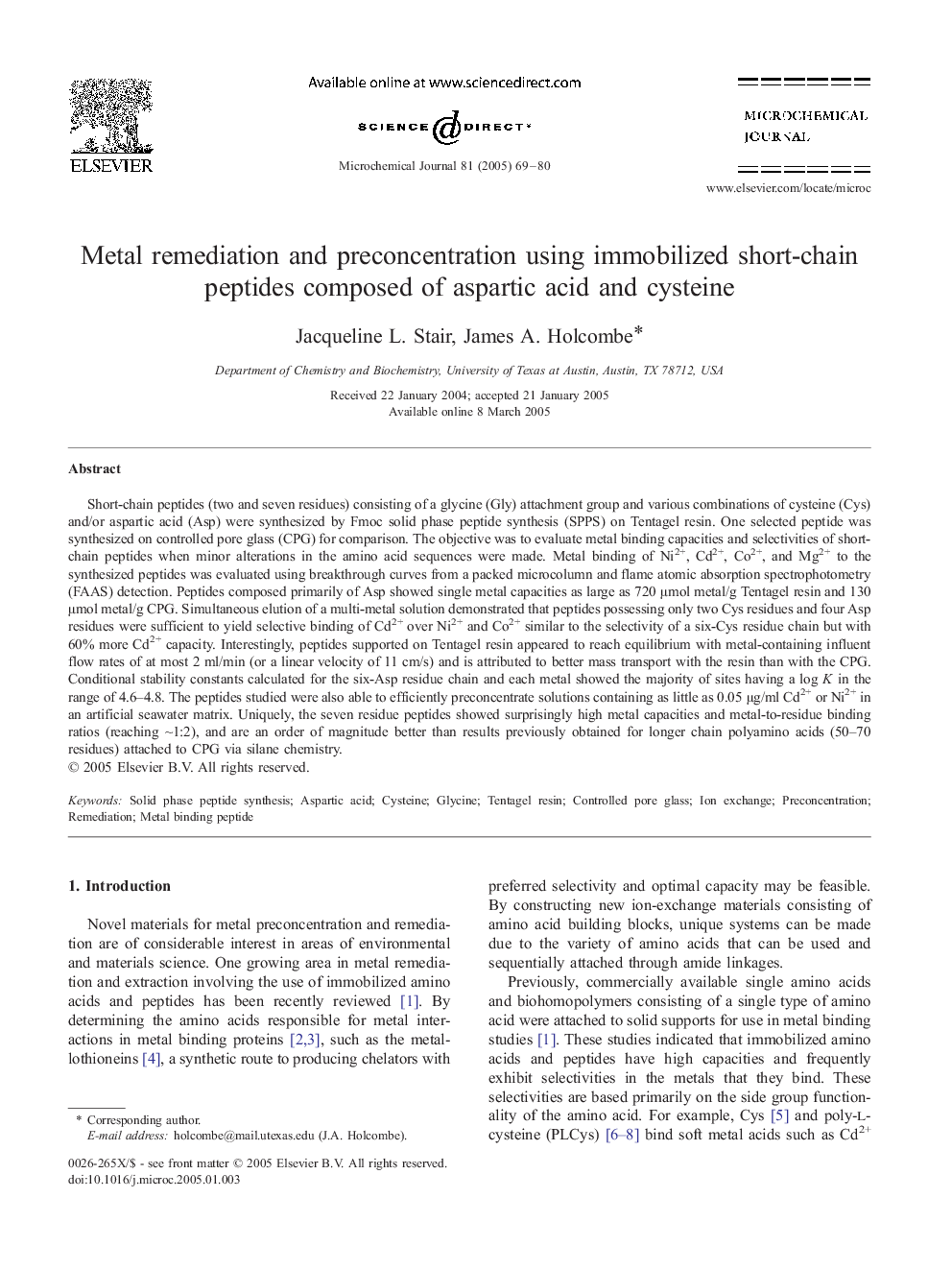| کد مقاله | کد نشریه | سال انتشار | مقاله انگلیسی | نسخه تمام متن |
|---|---|---|---|---|
| 10557221 | 968496 | 2005 | 12 صفحه PDF | دانلود رایگان |
عنوان انگلیسی مقاله ISI
Metal remediation and preconcentration using immobilized short-chain peptides composed of aspartic acid and cysteine
دانلود مقاله + سفارش ترجمه
دانلود مقاله ISI انگلیسی
رایگان برای ایرانیان
کلمات کلیدی
موضوعات مرتبط
مهندسی و علوم پایه
شیمی
شیمی آنالیزی یا شیمی تجزیه
پیش نمایش صفحه اول مقاله

چکیده انگلیسی
Short-chain peptides (two and seven residues) consisting of a glycine (Gly) attachment group and various combinations of cysteine (Cys) and/or aspartic acid (Asp) were synthesized by Fmoc solid phase peptide synthesis (SPPS) on Tentagel resin. One selected peptide was synthesized on controlled pore glass (CPG) for comparison. The objective was to evaluate metal binding capacities and selectivities of short-chain peptides when minor alterations in the amino acid sequences were made. Metal binding of Ni2+, Cd2+, Co2+, and Mg2+ to the synthesized peptides was evaluated using breakthrough curves from a packed microcolumn and flame atomic absorption spectrophotometry (FAAS) detection. Peptides composed primarily of Asp showed single metal capacities as large as 720 μmol metal/g Tentagel resin and 130 μmol metal/g CPG. Simultaneous elution of a multi-metal solution demonstrated that peptides possessing only two Cys residues and four Asp residues were sufficient to yield selective binding of Cd2+ over Ni2+ and Co2+ similar to the selectivity of a six-Cys residue chain but with 60% more Cd2+ capacity. Interestingly, peptides supported on Tentagel resin appeared to reach equilibrium with metal-containing influent flow rates of at most 2 ml/min (or a linear velocity of 11 cm/s) and is attributed to better mass transport with the resin than with the CPG. Conditional stability constants calculated for the six-Asp residue chain and each metal showed the majority of sites having a log K in the range of 4.6-4.8. The peptides studied were also able to efficiently preconcentrate solutions containing as little as 0.05 μg/ml Cd2+ or Ni2+ in an artificial seawater matrix. Uniquely, the seven residue peptides showed surprisingly high metal capacities and metal-to-residue binding ratios (reaching â¼1:2), and are an order of magnitude better than results previously obtained for longer chain polyamino acids (50-70 residues) attached to CPG via silane chemistry.
ناشر
Database: Elsevier - ScienceDirect (ساینس دایرکت)
Journal: Microchemical Journal - Volume 81, Issue 1, August 2005, Pages 69-80
Journal: Microchemical Journal - Volume 81, Issue 1, August 2005, Pages 69-80
نویسندگان
Jacqueline L. Stair, James A. Holcombe,